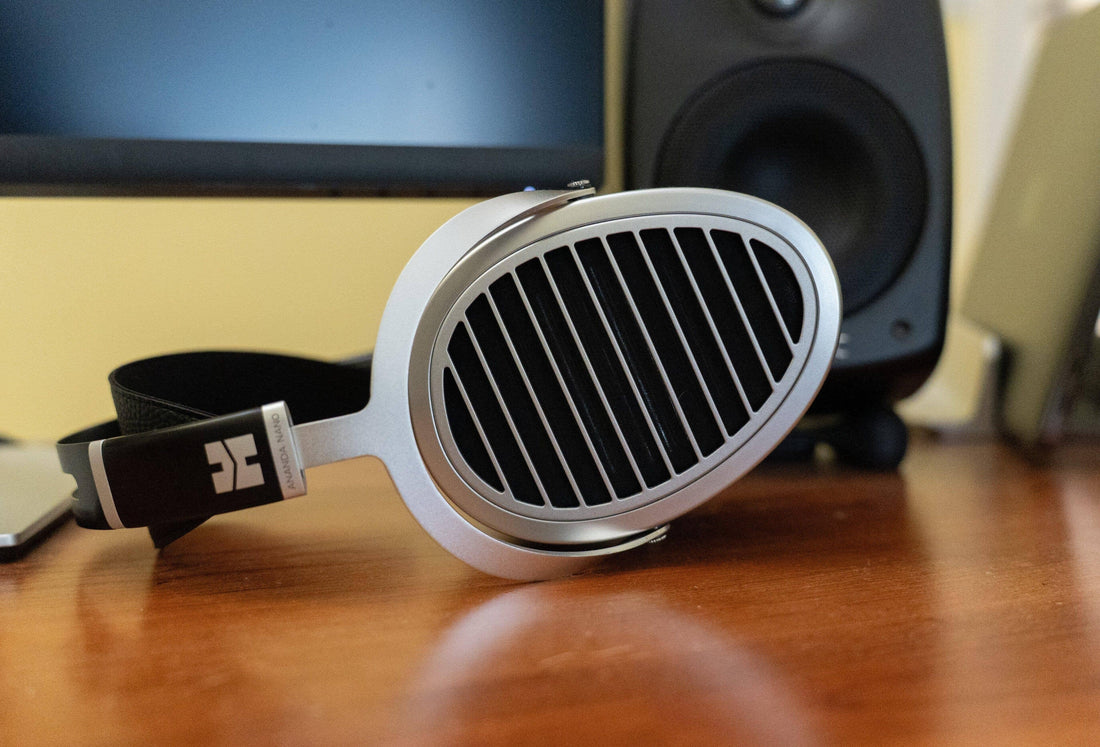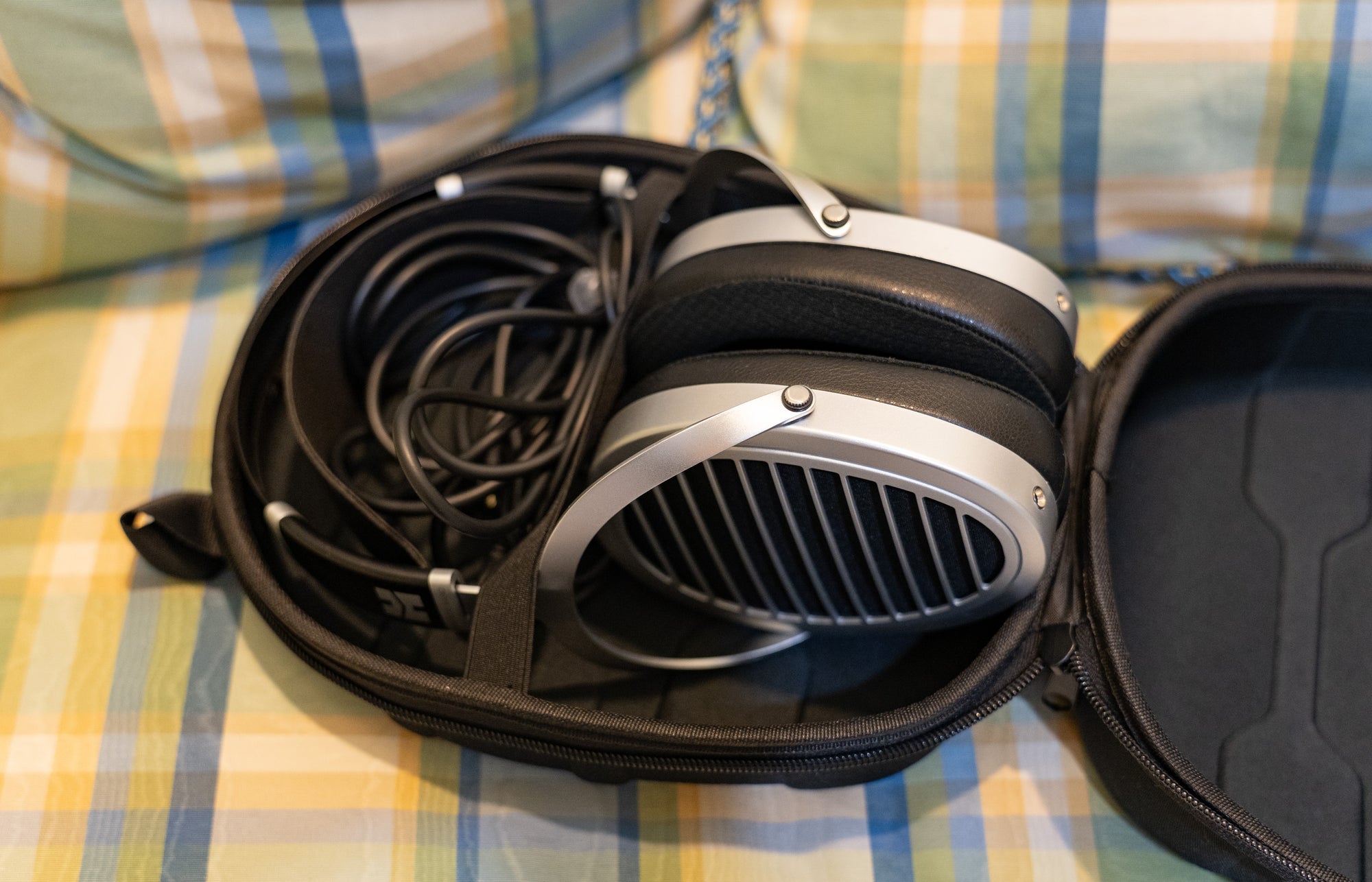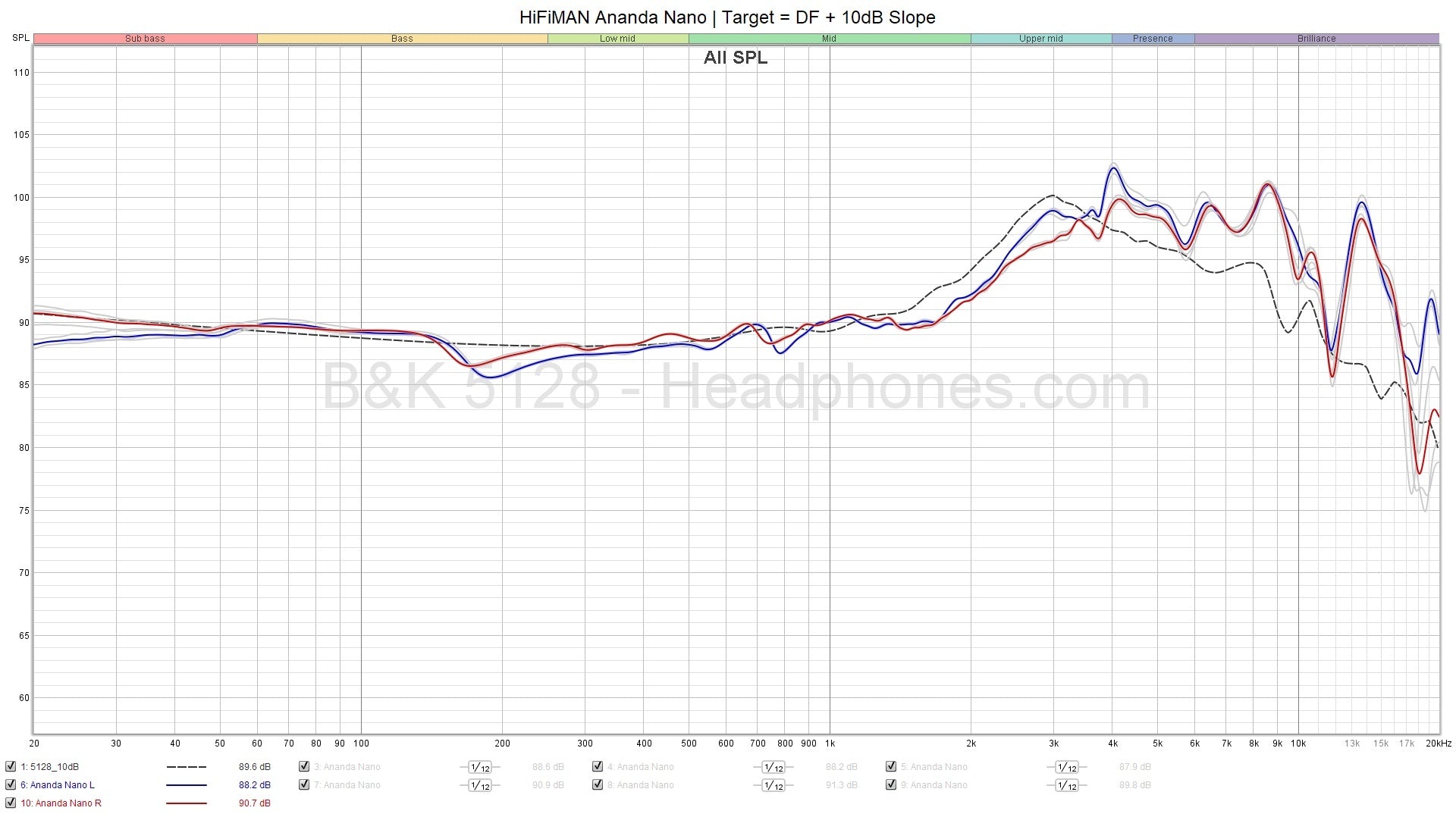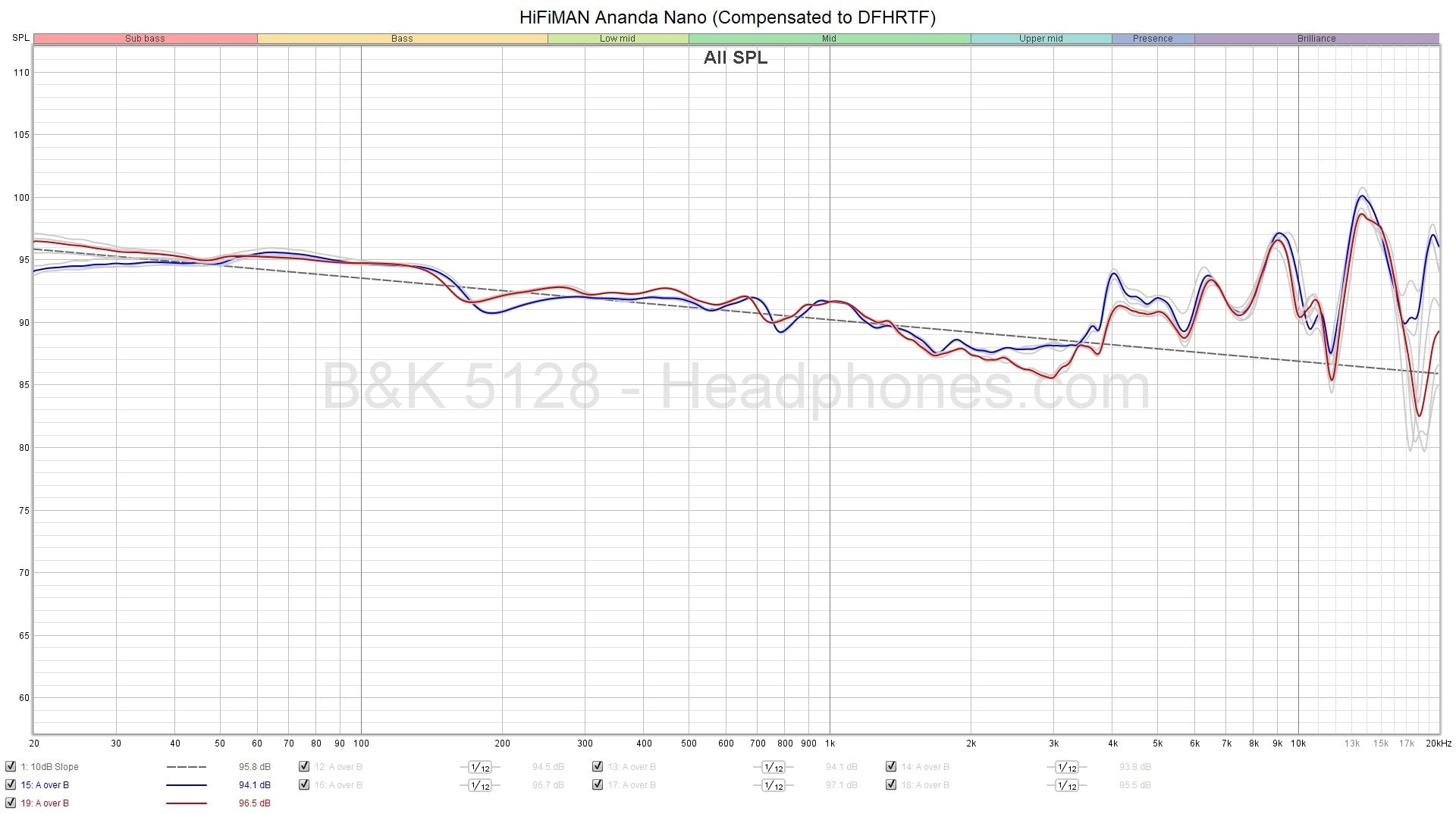HiFiMan Ananda Review - Trickling Down

Introduction
I have a love-hate relationship with HiFiMan’s headphones. On one hand, I’ve found myself quite impressed with their entry-level and TOTL (top of the line) offerings, specifically the Sundara and Susvara. On the other hand, I’ve had mixed sentiments about some of their middle of the road offerings. It’s clear that the brand has a specific sound that they want their headphones to aggregate on: a boon in terms of consistency, but meaning that it can be difficult to distinguish what sets their individual headphones apart from one another.
This has been further complicated with the trickling down of the stealth magnet technology that was pioneered with the Susvara, and the Ananda Nano is the perfect example. It supersedes the well-received Ananda; the question that poses is whether it holds the same spot in HiFiMan’s lineup. Let’s take a closer listen.
This unit was loaned for review by Headphones.com. As always, what follows are my honest thoughts and opinions to the best of my ability.
What we like
- High-clarity, sharp presentation
- Good soundstage and imaging capabilities
What we don’t like
- Timbre needs improvement and treble sounds fatiguing
- Accessories could be better
- Not enough to positively distinguish it from HiFiMan’s other offerings
Source & Drivability
All critical listening was done off of my iPhone 13 Mini with a Questyle M15 and an iFi Micro Black Label with lossless files. I had no issue hitting my usual listening volume of ~70dB on either device. If you would like to learn more about my listening methodology, then I would encourage you to check out this page.
In-the-Box
The following accessories are included with the Ananda Nano:
- Zippered soft-carry case
- 10ft 3.5mm cable
- 3.5mm to 6.35mm adapter

The case that comes with the Ananda Nano is made of a thinner material and does not offer much structure. It gets the job done, and it’s lightweight, but I wouldn’t trust it to protect the headphone from a drop or getting squished. There is a convenient carry handle on the outside, and a loop of fabric on the inside to secure the headphone. However, I find myself wishing there was a mesh slot, such as on the inside of the lid, to secure accessories like the cable and 3.5mm to 6.35mm adapter. As it stands, the case will not fit the Ananda Nano with the cable attached and you’re left to just cram the cable in.

Speaking of the cable, it’s just okay. It’s quite rubbery and it doesn’t feel very premium. But again, it gets the job done. The long length is a boon to listeners who are planning to run the headphone from a distance, but I think it would have been convenient to include a shorter cable as well, at least for more mobile listeners. The cable already feels so cheap that I doubt this would inflict much more cost.

The Ananda Nano itself shares common design language with the other HiFiMan headphones. It has a "double" headband wherein the ‘first’ headband - which is really the headphone's frame - does not shift. The ‘second’ headband does not shift either, though, unlike some of HiFiMan’s other headphones. This means that all adjustments are made by extending/retracting the ear cups from the chassis. Aesthetically, the Ananda Nano does protrude vertically from the head a tad more than some other headphones. The Ananda Nano’s ear cups are egg-shaped in nature, providing a very enveloping and comfortable experience on the ears. However, unlike some of HiFiMan’s other designs like on the Arya, these cups don’t swivel for increased versatility.


Sound Analysis
My initial impression was that there was a sense of vocals sounding unnaturally detailed on the Ananda Nano. I heard this based on two observations: 1) a lack of body to vocals, especially male vocals and 2) a noticeable ‘edge’ to the transients of female vocals and - in specific instances - a slight sibilance.
I am not unfamiliar with the first observation. Similar to most HiFiMan headphones, the Ananda Nano is tuned with a slight recession from 1-3kHz. This is a tuning decision that is often used to create a greater sense of space around vocals (think of the legendary Sennheiser HD800S) at the expense of them sounding less ‘soulful’. In conjunction with the Ananda Nano’s fairly flat bass response, the Ananda Nano definitely leans toward the more ‘analytical’ side in terms of its presentation.
But the second observation is my primary concern. Simply put, the Ananda Nano is a very treble intensive headphone, so much so that it affects perception of antecedent frequencies, like those in the upper-midrange. It has copious amounts of energy from 5-6kHz and then, after, what sounds like multiple peaks in the mid-treble and upper-treble.
It’s worth noting that it is possible for a transducer to be ‘peaky’ but to balance out the peaks tastefully. In fact, most conventional speakers measure quite jaggedly in the treble! The peaks are usually at a similar amplitude and closely spaced, so the overall treble is perceived as linear and translates to increased detail retrieval in actual listening. However, the peaks on the Ananda Nano are not spaced in such a manner. Snare cracks have a harsh crispness to the way they connect, and there’s a noticeable amount of glare in the upper-treble.
In some sense, I would analogize listening to the Ananda Nano to being in the seat of a very fast car - specifically, a very fast out of control car. There’s an initial rush of excitement when you see how fast you’re going, but that emotion quickly shifts to trepidation when you start taking the corners a little too fast (or, in our analogy, you start hearing that scraping edge to transients). And of course, things simply crash when you start hearing instruments that specifically token the treble frequencies.
Of course, this is my experience with the Ananda Nano with my listening tolerances. If you are a listener with a higher tolerance for treble brightness, the Ananda Nano might be worth giving a listen. It does offer a lot of the positive qualities that most would consider synonymous with the planar driver topology, and I was impressed with the sense of ‘resolution’ that it exuded on first listen. It also sounds fairly ‘open’ in terms of its soundstage and the way it images. But if I had to answer whether the Ananda Nano balances these qualities appropriately with its tonal balance…I think it could use some refinement, and it wouldn’t be my first pick out of the HiFiMan lineup.

Comparison
This is a good segue into some of the other models offered in HiFiMan’s lineup. Ultimately, most of the HiFiMan models measure quite similarly, and they share a house sound, but I have concrete preferences between them. For example, it’s been some time since I’ve listened to the Arya Stealth, but I don’t think the Ananda Nano is in the same league. The most natural step down from the Ananda Nano (outside the Ananda which I have not listened to yet), then, is the Edition XS.
The biggest distinction I hear between the Edition XS and the Ananda Nano is in the treble. The Edition XS is similarly treble centric, but it doesn’t have as much energy from 5-6kHz. This makes it a lot more tolerable when it comes to vocal sibilance, as the 5-6kHz region is closer to the upper-midrange. Yes, the Edition XS might not sound as ‘detailed’ to some listeners, but for the better balance in this region alone, the Edition XS aligns significantly closer with my preferences. But if we go a step down even further, if I had to again choose between slightly better technicalities on the Edition XS and a more palatable tonality on the Sundara, I’m inclined to go for the Sundara. That’s not to say that the Edition XS is bad - in fact, it’s quite solid - the Sundara is just that good to my ears.
The Bottom Line
It’s difficult for me to recommend the Ananda Nano. As I alluded to above, many of the HiFiMan headphones aggregate on a similar sound and I believe there are HiFiMan headphones that offer not just better value but also superior sound quality. Where does this leave the Ananda Nano? I think some listeners, especially those with a higher tolerance for treble brightness, might still appreciate the technical qualities that it delivers. But these listeners will also have to be indexing for a more analytical sound: a niche within a niche, if you will. And any headphone that is a niche within a niche is usually a headphone that I would not consider conventionally good.


